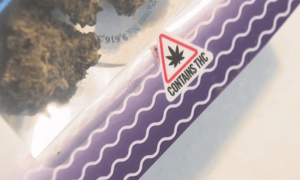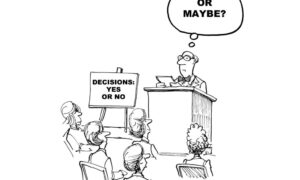Cannabis M&A: Purchase Price Adjustments

In this article our friends at Harris Bricken take a look at indemnification
In my last post in this series, I discussed how the purchase price is structured in cannabis M&A transactions, and how escrow can be used in connection with the purchase price. Today, I want to discuss how adjustments are commonly made to the purchase price, both during the pre-closing period (between signing and closing), and also after closing. I’ll break these down below to discuss, at a high-level, some of the more common adjustments we see.
One of the most common adjustments we see to the purchase price is for indemnification. Indemnification is a legal concept that may force one party to a contract to pay certain expenses of another contract party incurred in a third party action. For example, a cannabis business seller may agree to “indemnify” a buyer if the seller did something wrongful or breached the contract, and a third party sued the buyer in relation to the seller’s action.
Indemnification clauses can be among the most highly negotiated in any M&A transaction. If someone buys a business, they want assurances that they can be compensated, for example, if something the seller promised was false. In other words, if the seller said all taxes had been paid but there were in fact unpaid taxes, the buyer would want the seller to foot the bill.
There are all kinds of ways that indemnification caps are negotiated which I can discuss in a later post. Circling back to the concept of purchase price adjustments, if there is an indemnifiable loss, it makes sense in some cases–especially in the period between signing and closing–to offset that loss against the purchase price. So if, for example, the buyer agreed to pay $1 million at closing but there was a $400,000 indemnifiable loss during the pre-close period, the purchase price could be offset by the loss, making the closing payment $600K (in the event that the buyer did not or could not walk away).
What about indemnifiable events post-closing? It’s not uncommon for buyers to ask that a portion of the purchase price be held back in escrow for some period after closing to serve as an indemnification fund of sorts. In such a case, monies held in escrow would be released to the sellers at the end of that post-close escrow period, however long it was. However, if there were an indemnifiable event during that period, the money would be released back to the buyer or to the third party entitled to the money. If there is no post-close indemnification escrow, then the buyer’s only remedies (subject to applicable statutes of limitation and survival periods in the purchase agreement) would be: 1) to make a demand and, if necessary, sue the sellers or 2) to offset any future payments owed under a promissory note or similar obligation to the seller, if the transaction were structured accordingly.
Another common adjustment to the purchase price comes in the form of inventory adjustments. When a buyer acquires a cannabis business that is already operational (especially a retail cannabis business), it wants to make sure that the sellers operate it in the normal course of business during the pre-close period and that at the time of closing, there is sufficient inventory to continue operating in that normal course. One of the common ways to deal with that is to set a target for a specific value of inventory to be held by the company at closing. Since inventory is always a moving target, the purchase price can be adjusted upwards or downwards depending on whether the inventory target is or is not met or exceeded.
Yet another form of purchase price adjustment (if you can call it that) we see is for transaction expenses. For a lot of reasons, sellers may ask that portions of the purchase price be used to pay off various forms of transaction expenses incurred in the sale of the business, including even things like attorneys’ fees. Generally, the sellers will provide a buyer with a statement of such expenses at closing, and the buyer will pay them. This isn’t exactly a purchase price adjustment in the sense that the price is being increased or decreased, but it certainly changes the mechanics of how and how much the sellers are paid at closing.
The last adjustment I’ll talk about today is for working capital. Sort of like inventory, buyers of operating cannabis businesses may want the business to maintain sufficient operating capital without cash injections from the buyer to continue operating after closing. Whether working capital is factored into a purchase agreement will change the purchase price, and the exact amount is usually assessed based on historic data of the company. Like with inventory targets, working capital is fluid so targets are usually negotiated with potential for upwards and downwards adjustments, depending on whether targets are undershot, met, or overshot.
For more on cannabis M&A, please stay tuned. You can also read some of our other posts below:
- Five Common Problems in California Cannabis M&A Transactions
- Cannabis M&A: Get to Know Your New Landlord
- Top Five Things to Know if You’re Building Your Cannabis Empire Through M&A
- Cannabis M&A: The Purchase Price and How It’s Paid
- Washington Cannabis: Buckle Up for a Brisk 2021 in M&A Activity
- Cannabis Mergers and Acquisitions: Preparing for Success
- Cannabis M&A and Real Estate Transactions: What is a Closing?
- Cannabis Transactions and Letters of Intent
- Cannabis Due Diligence Mechanics and Red Flags
- Top Five Red Flags for California Cannabis M & A
- What You Need to Know When Buying a Cannabis Business, Part 5: Structuring the Purchase
- What You Need to Know When Buying a Cannabis Business, Part 4: Working With Brokers
- What You Need to Know When Buying a Cannabis Business, Part 3: Hiring Your Lawyer
- What You Need to Know When Buying a Cannabis Business, Part 2: The Regulatory Environment
- What You Need to Know When Buying a Cannabis Business, Part 1: Overview
Source: Canna Law Blog




































